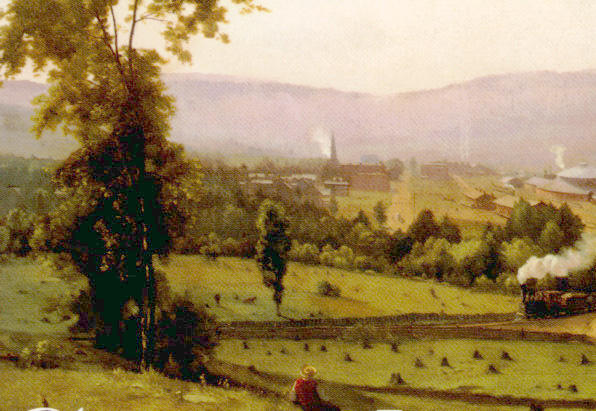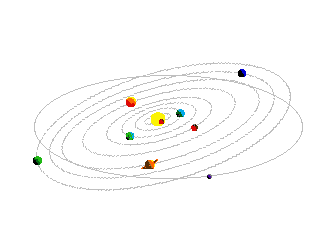Time as an organizing agent | Essay | Case | Periodicity | goals | people
Title: "The land was ours before we were the Lands."
The contributions of agrarian settlement and natural history in early America
Time as an organizing agent | Essay | Case | Periodicity | goals | people
Questions simple model economic cycles ecological framework writing essays conclusion
Aim:
Describe in writing how the human dependence on the ecosystem alters the biotic community:

What changes in the wildlife and vegetation characterized early American landscape?
Background
Early Colonial vegetation alterations
Siry-chapter 2 & pp. 18, 5-28, 32-33.
Siry's model of eco-change of Carolyn Merchant's ecological revolutions:
We are victims of our language, its evolution & use.
Landschaften, landscape: an area settled by agrarian societies: composed of wooded land called coppice, garzing lands often held in common, and fields.
Oikumene, settled areas of fields, structures, roads, orchards.
Inorganic + Organic "conditions of existence" = functional self nourishing whole
setting or place + wildlife & fisheries = ecological community
WEAL water, energy, air, land [acronym]
Water tables altered (lowered by pumping water)
Preindustrial landscape, water and air changes were common and considered largely beneficial.
Case: The recognition that humans are geological agents of change.
Choose five dates that reflect a growing concern for protecting resources before 1825.
The Naturalists: seeing with "new eyes." S-3.
What is a naturalist?
A generalist who studies plants, animals, rocks and climate.
- Mark Catesby the national heritage of bird life
- J. J. Audubon: Birds and fisheries
- George Catlin: the park idea
- "Wild beasts & wild men"
- George Perkins Marsh: "Geographical regeneration"
- Vermont fisheries, 1850s;
- Man & Nature, 1864.
- Henry David Thoreau: "Botanizing and ecology," seeds, forest reserves
- John Wesley Powell: "rivers and wilderness"
Ecological perspective and imagination
Pieces of the landscape became valued for their use, beauty and scenic variety.
1. nature, the order, essence, origins, character & ambiance
2. Agrarian settlement created a lasting national illusion:
3. Naturalists awakened the need to scientifically study the earth
4. New institutions (Department of the Interior, 1849) were formed and later the Geological and after Biological Surveys to better explore and examone the new territories of the frontier.
Working to convert reading to notes and notes to an essay:
A. Select & read a paragraph from each chapter that suggests the key theme in that chapter.
B. Explain what that chapter means in terms of the paragraph and the key words in that selection:
C. Write a paragraph of your own that relates each of the above paragraphs to one another and the themes you have discovered in the texts:
D. Read you paragraph to another student and present the ideas of both to the class by writing them down on the sheets provided.
E. Put your key words on the Post-it notes and bring them to class.
F. Summarize your main idea in no less than three sentences:
Students should be able to articulate, describe, discuss and demonstrate a basic knowledge of:
How the European ecological revolution in landscape patterns altered the Americas.
When American cultural nationalism & scenic monumentalism emerged.
What caused significant landscape alterations before railroads were invented?
![]()
Telling Time: cyclical behavior of economic waves of commercial scarcity and glut.
|
|
recessions: | years elapsed | cycle length | related events |
|
|
1784 | 23 | 35 | revolt & war |
|
|
1819 | 33 | 18 | Land sales |
|
|
1837 | 18 | 20 | 2d National Bank |
|
|
1857 | 20 | 16 | Railroads |
|
|
1873 | 16 | 19 | Credit Mobilier |
|
|
1892 | 19 | 15 | resources |
|
|
1907 | 15 | 22 | speculation |
|
|
1929 | 22 | 28 | financial collapse |
|
|
1957 | 28 | 32 | world trade |
|
|
1990 | 32 | 10 | stock speculation |
minimal: 10 to 25.1 -- average 7.59 years. | maximum: 35 to 25.3 -- average is 8.07 year time span
![]()
Time: perception of cyclical versus linear time and personal versus cosmic chronology

What is time and how is it measured?
When asked what students in an upper division class on Environmental Science thought of the difference between long and short term, time frames & what is old versus new in terms of years, 8 people responded as follows:
Responses
What is the distinction between long and short-term?
Distinguishing the long and short - term time frameworks
| amount | Short-term | Terms | Notes | Long term scale | Period |
| billions | complex life | prehistoric | periods | Geological | years - eras and eons |
| thousands | agriculture | millennia | 1-10 | Climate | 10,000 years to ten millennia |
| centuries | 10 | millennium | 1 | Historical | 1000 years to a millennium |
| 100 | 10 decades | centennial | century | generations | 100 years is 4 (25 yrs) or 5 (20) generations |
| 75 | years | 7.5 decades | expectancy | lifetime | 75 years (three generations or more) |
| 50 | weeks | annum | year | 52 weeks in a year | |
| 30 | days | month | 4 weeks | 28-31 solar days in a lunar month |
Multiple time frames in this class:
| |
Discipline | duration that is of utmost importance or focus: |
|
|
Economics | 2 years quarterly variable this month |
|
|
Ecology | century seasonally centuries annually |
|
|
Gestation | 9 months; 28 days; trimesters conception |
|
|
Generations | 25 to 20, 65-69 life expectancy, 4-6/per Century |
History is an accounting of time, a correlation of events and their frequency such as famine, freezing, locusts and drought are periodic disturbances.
Two kinds of periods are:
predictive variability and stochastic patterns:
drought cycles 7 - 11 years vs. warming / cooling cycles.
Humans take account of their surroundings, changes and events.
Where these alterations are not generated by collective human behavior, such periodic alterations in climate are stochastic variations to which human settlement adjusts.
Since the industrial revolution human waste has accumulated in the water and the air and consequently exaggerated the greenhouse effect thereby destabilizing the atmospheric thermostat.